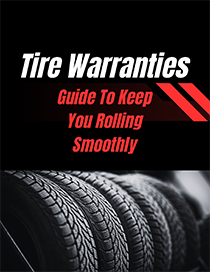The Importance of Regular Tire Maintenance
Tires are often the most neglected part of vehicle maintenance, yet they are one of the most vital components when it comes to safety. Regular tire maintenance can extend the lifespan of your tires, improve fuel efficiency, and ensure a smooth driving experience. In this blog, we’ll cover the essential steps for maintaining your tires properly.
1. Check Tire Pressure Regularly
Maintaining the correct tire pressure is one of the easiest ways to improve tire performance. Underinflated tires create more friction with the road, leading to increased tire wear, reduced fuel efficiency, and a greater risk of a blowout. On the other hand, overinflated tires can cause the tires to wear unevenly and reduce traction.
Check your tire pressure at least once a month using a tire pressure gauge. Most vehicles have a recommended tire pressure listed on the door frame or in the owner’s manual. It’s always best to check the pressure when the tires are cold for the most accurate reading.
2. Rotate Your Tires
Tire rotation is a simple yet effective way to extend the life of your tires. Due to the weight distribution and the way your vehicle drives, the front tires tend to wear faster than the rear tires. Rotating your tires regularly helps ensure even wear across all four tires, improving their lifespan and performance.
Most manufacturers recommend rotating your tires every 6,000 to 8,000 miles, but it’s best to consult your vehicle’s owner’s manual for specific guidelines.
3. Align Your Wheels
Proper wheel alignment is essential for smooth driving and tire longevity. Misaligned wheels cause uneven tire wear, leading to decreased performance and more frequent tire replacements. If you notice your vehicle pulling to one side or feel vibrations in the steering wheel, it’s a sign that your wheels may be misaligned.
Having your vehicle’s alignment checked at regular intervals—usually once a year or every 12,000 miles—can prevent these issues and keep your tires in good condition for longer.
4. Balance Your Tires
Balancing your tires ensures they wear evenly and helps prevent vibrations while driving. Unbalanced tires can lead to a bumpy ride and excessive wear, especially at higher speeds. It’s recommended to balance your tires when you replace them or if you notice unusual vibrations.
5. Inspect Your Tires for Damage
Regularly inspect your tires for signs of wear or damage, such as cracks, punctures, or bulges. If you notice any abnormalities, it’s important to have them checked out by a tire professional as soon as possible. Driving on damaged tires can lead to blowouts, decreased performance, and safety hazards.
6. Keep an Eye on Tread Depth
Tread depth is a key indicator of tire health. Tires with worn-out treads have less traction, especially in wet or slippery conditions. If the tread depth is too low, it’s time to replace your tires. You can check the tread depth using a tread gauge or a penny—if the top of Abraham Lincoln’s head is visible when inserted into the tread, it’s time for new tires.







